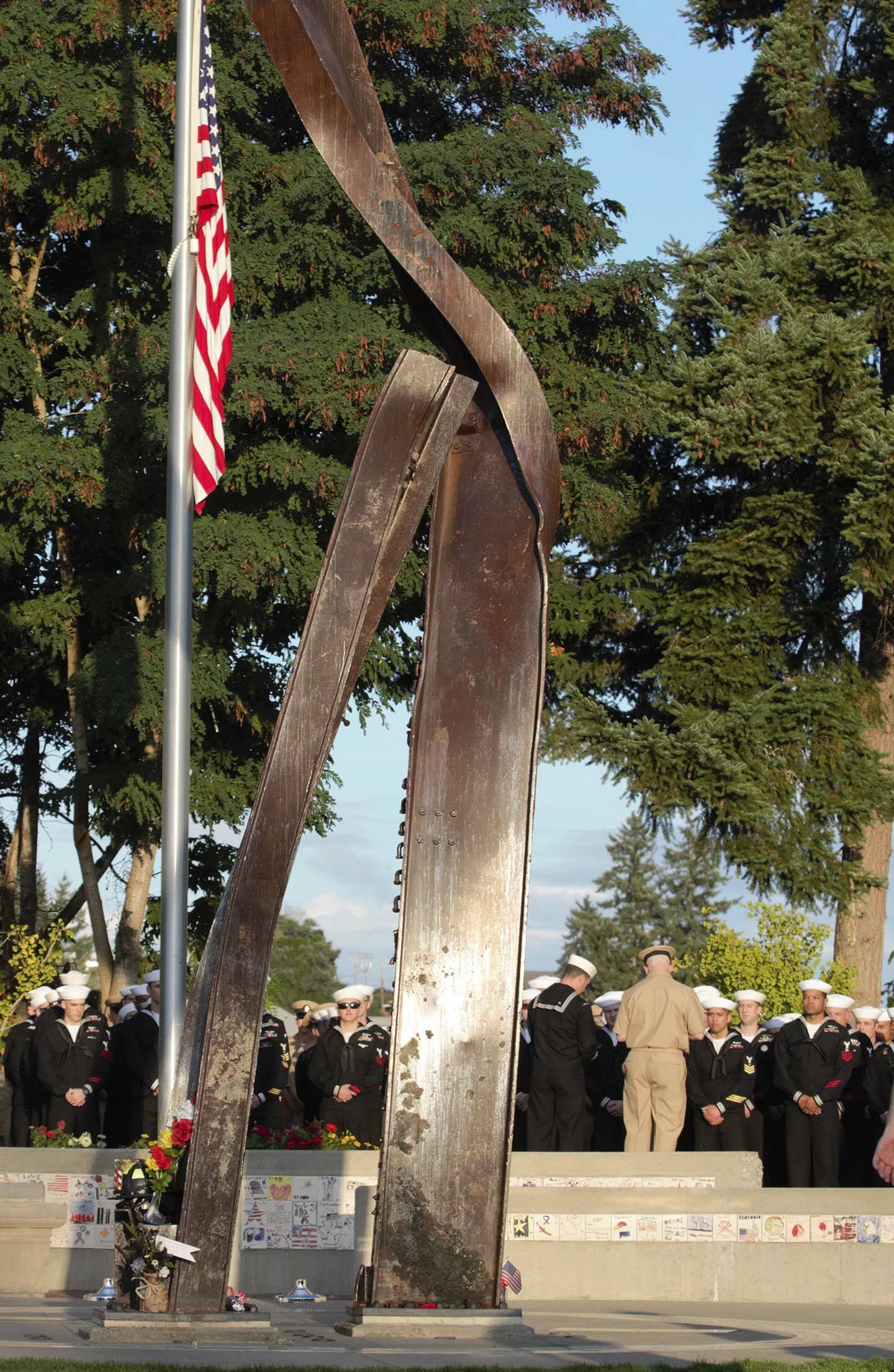It was one of the most ambitious projects of its time—four years of work put into an extremely vivid reminder of the traumatic experience that was the 9/11 terrorist attacks.
It’s a process that Roy Lusk, former fire chief for Central Kitsap Fire and Rescue, remembers as vividly as where he was when the attacks occurred.
“I wrote the initial letter of consideration and sent it off to the New York and New Jersey Port Authority,” he said. “I remember being told by a gentleman that we were the first in Washington state to be approved for this project. That was just overwhelming.”
Lusk was assistant fire chief for CKFR when the Port Authority gave the fire department its approval to receive two steel beams pulled from the remains of the two World Trade Center towers, a privilege given to just a handful of departments nationwide. He then continued on, assisting with the long process of erecting the Kitsap 9/11 Memorial, from the day the steel beams arrived in Silverdale in 2010 to the day they were dedicated in 2013 as the highlight of the permanent structure in Evergreen Rotary Park.
Ten years later, it continues to serve as a reminder of the eternal story behind the attacks and the lives that were lost.
“We wanted to create something that was not only respectful, but something where somebody could come to the memorial and learn and teach others about it,” Lusk said. “The graphics on it, the way it’s laid out, all of it plays into that.”
Dave Fergus, who took an active role in the design portion of the project, explained the different elements of the memorial. Much of the character of the project resides in the beams, one of which was believed to be up in the fires where one of the planes collided with the building. Both were described as having a tarnished color and are evidently misshapen. Melted asphalt remains embedded in the steel from the collision with the ground.
The beams form somewhat of an arch, an instrumental part of the design that Fergus said encourages visitors to not just visit but experience the memorial. “You can walk under them. You can feel the weight of them above you. You can touch them and feel the coldness, knowing they were part of that day,” he said.
Other elements of that fateful day are located in the memorial. The beams, as well as seven squares mapping out the exact seating arrangements of a plane, stand inside a circle of granite rings, the innermost being the exact diameter as the fuselage of a Boeing 767. The circle maps out the different stories of each flight. A limestone cornerstone weighing 400 pounds came from a collapsed portion of the Pentagon, and sand from the crash site of Flight 93 lies in a glass block.
Fergus said the design encompasses the story of all those involved from those on the ground, in the building and in the sky. “It was important to honor everybody,” he said.
As in years past, a small crowd made up of local military, residents and fire department staff visited the memorial Sept. 11 to pay their respects to the nearly 3,000 lost lives and watch the annual Sunset Flag Raising Ceremony.
Fire chief Jay Christian echoed the message of fire chiefs before him and around the world, saying the nation must never forget the tragedy, nor should it ever forget how it brought a fragile nation together. “Let us today carry forward the message of hope and resilience that emerged from the ashes of 9/11,” he said.



